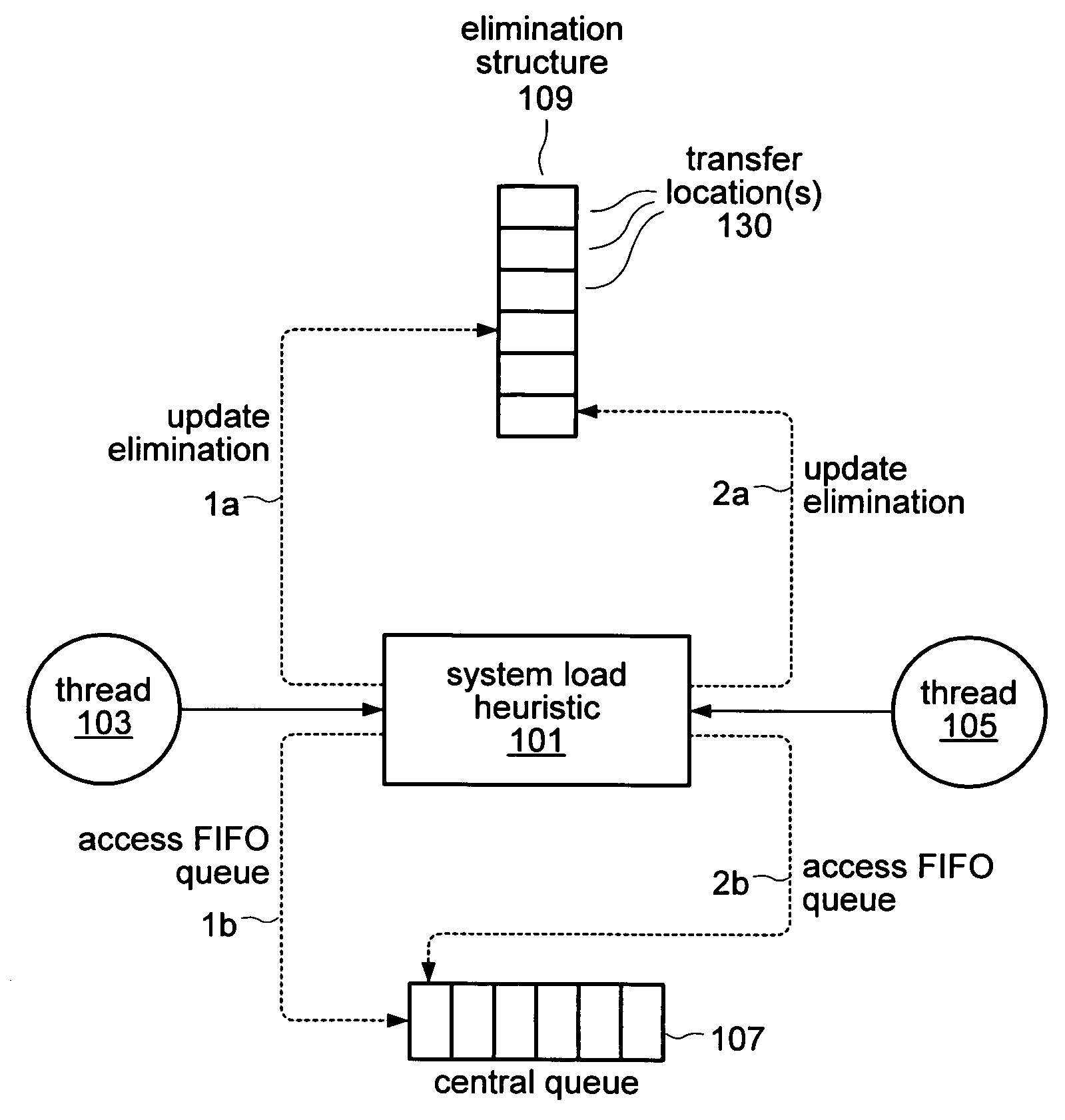Scalable method for producer and consumer elimination
a scalable and producer technology, applied in the field of memory management, can solve the problems of individual process blockage, enqueue operations that interfere with concurrent dequeue operations, and bottlenecks in the head and tail of the queue, so as to avoid bottlenecks and restrict scalability
- Summary
- Abstract
- Description
- Claims
- Application Information
AI Technical Summary
Benefits of technology
Problems solved by technology
Method used
Image
Examples
Embodiment Construction
[0033] An elimination technique for lock-free data transfer, or elimination, between producers and consumers is described herein. Producer and consumer elimination, as described herein, is mainly described with regard to how a consumer and producer exchange information after they have already agreed upon a location to perform the exchange. Producers and consumers, such as the enqueue and dequeue operations in a FIFO queue implementation, may agree on a transfer location in any of various ways, according to various embodiments. For example, in one embodiment, a producer and a consumer may transfer data using a single, predetermined location. In other embodiments, each producer and consumer may select transfer locations randomly. In general the method for producer and consumer elimination described herein may be used with virtually any elimination application, including a scalable first-in-first-out (FIFO) queue implementation that utilizes elimination techniques and includes a centra...
PUM
 Login to View More
Login to View More Abstract
Description
Claims
Application Information
 Login to View More
Login to View More - R&D
- Intellectual Property
- Life Sciences
- Materials
- Tech Scout
- Unparalleled Data Quality
- Higher Quality Content
- 60% Fewer Hallucinations
Browse by: Latest US Patents, China's latest patents, Technical Efficacy Thesaurus, Application Domain, Technology Topic, Popular Technical Reports.
© 2025 PatSnap. All rights reserved.Legal|Privacy policy|Modern Slavery Act Transparency Statement|Sitemap|About US| Contact US: help@patsnap.com



